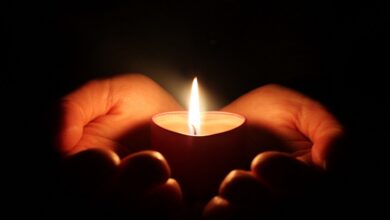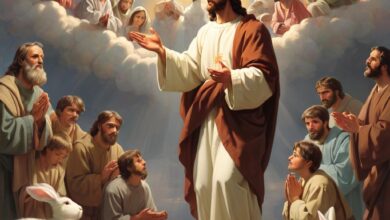Divine Mercy Sunday Year B
Acts 4:32-35, Psalm 118, 1 John 5:1-6, John 20:19-31
Divine mercy Sunday since May 2000 has been celebrated on the second Sunday of Easter as a fruit of Easter. Included in the universal calendar St. John Paul II (Pope) wanted to draw humanity’s attention to the unfathomable mercy of God. The death and resurrection of Jesus is a way by which God achieves reconciliation with humanity. Indeed his mercy endures forever as the psalmist reminds us. The message of Divine Mercy is simple: God’s love and mercy is his greatest attribute. In fact scripture says God is love (1 John 4:8). If God would offer his son for the forgiveness of our sin, what sin would be beyond the mercy of God. The message of Divine mercy is often summed up in the acronym ABC. Ask for the Mercy of God, Be Merciful and Complete trust in God.
The first reading tells us of how the early disciples lived and proclaim the resurrected Christ. They were of one mind and heart. No one lacked anything for they shared all that they had. This in no way suggest that there was no difference among them or that certain issues did not crop up but they knew how to bear with one another. Their focus was on the resurrected Christ and what it meant for them. This was enough for them to live in peace and harmony. It is this peace and harmony that Jesus declares to the apostles when he appeared to them the first time.
After the death of Jesus the disciples had locked themselves up for fear of the Jews. We can recall the experience of Peter and why he had to deny Jesus. The shepherd was struck and indeed the sheep scattered. Now the shepherd goes after his sheep to reconcile them and bring them back to the fold. When we sin, we isolate ourselves and lock ourselves up and become enclosed. That is the nature of sin, it makes us recoil in and shy away of people and from God. Sin makes us fearful and at the sight of things related to God, we feel our sins condemn us and make us think we deserve punishment. Naturally this will make everyone scared and therefore isolate themselves just as the disciples had done. But the mercy of God breaks all bounds even when we have locked ourselves, as we often do when we sin God, to offer us his peace and tranquility. This peace is what Jesus offered his disciples when he appeared to them. He shows his hands and sides to them as a message that they have been healed through his wounds (Is. 53:5, 1 Peter 2:24).
Jesus does not only forgive them but he makes them agents of forgiveness. They are also to offer the mercy of God to others. By breathing on them, he gives them that authority and power to offer his forgiveness to all who approach them in what today we know as the sacrament of reconciliation.
We all also have the spirit of God within us for which we are to forgive one another. As we have received from God his abundant mercy we also should be merciful to others: Freely we have received; freely we must give (Matt. 10:8)
We see the difference between the community in the Gospel before they experienced the resurrected Christ and the community in the Acts of Apostles after they experienced the resurrected Christ. One is enclosed and fearful because of sin and the other is open and full of joy and peace because of the mercy of God.
The second reading reminds us of what happened on the cross. Thus St. John writes in his letter “this is the one who came through water and blood, Jesus Christ” (1 John 5:6). John again reports in his gospel “Instead, one of the soldiers pierced Jesus’ side with a spear, bringing a sudden flow of blood and water” (John 19:34). This is the symbol of the Divine mercy: we see in the image blood and water flowing from the heart of Jesus. Sister Faustina reports in his diary: “In the evening when I was in my cell, I saw the Lord Jesus clothed in a white garment. One hand was raised in a gesture of blessing, the other was touching the garment at the breast. From beneath the garment, slightly drawn aside at the breast, there were emanating two large rays, one red, the other pale. In silence I kept my gaze fixed on the Lord; my soul was filled with awe, but also with great joy”. Sister Faustina herself writes in her diary the explanation Jesus gave her concerning the rays she saw: “The two rays denote Blood and Water. The pale ray stands for the water that makes souls righteous. The red ray stands for the Blood which is the life of souls …”
Through his blood Jesus has purchased souls for himself (Col.1:20) and through water brings about new birth in all who believe in him. Indeed the prophet Ezekiel (36:25) reminds us that God would use water to cleanse of our sins. Jesus who has purchased us awaits us to wash us clean anytime we go wrong. Let us draw close to the throne of mercy where we can gain salvation.
Rev. Fr. Emmanuel Salifu

